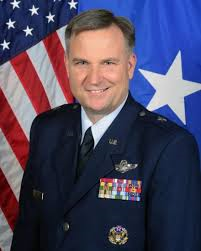Pentagon IT consolidation moving fast, but has tough problems to solve
The Joint Service Provider is creating massive savings, but still has roadblocks to get through.
The program tasked with consolidating the Pentagon’s IT systems may reach full operating capability in the next six months; just one year after it started operations.
“That’s, in my view, kind of a record,” said Air Force Brig. Gen. Brian Dravis, the director of the Joint Single Service (JSP), formally the Joint IT Shared Service Provider-Pentagon. “I’ve done conversions in the Air Force and we typically use one year to get to [initial operating capability] and three years to go … [full operating capability].”
Part of JSP’s responsibility is getting a handle on the Defense Department’s massive transition to Windows 10.

Deputy Defense Secretary Bob Work signed a memo creating the office in May 2015. Through the policy, JSP was directed to consolidate the Army IT Agency, the Office of the Secretary of Defense’s Enterprise Information Technology Service Division and several smaller IT service providers in the new organization.
Dravis said that consolidation involved joining together a workforce of 1,500 and 1,000 and making them work together.
JSP is in charge of supporting institutions like the Army Headquarters, the Joint Staff and functions of the Office of the Secretary of Defense and sustaining what they were doing in the past while still streamlining the IT systems.
“It was about as hard as you imagine and it was about as high adventure as you would imagine and it continues, although I would say we are making some great strides and some significant successes,” Dravis said.
Those successes come in the form of savings for the Pentagon. So far in fiscal 2016, the JSP has hit 200 percent of its savings goal and hit its goal at the beginning of the second quarter.
In 2015, the office hit 500 percent of its savings goals.
“In my view we haven’t really been draconian about it,” Dravis said. “We’ve taken common sensical approaches to look at areas of relatively easy consolidation in starting. In the area of contracts for example, we in under eight, nine months’ time have reduced the aggregate number of contracts we’ve had by about 20 percent.”
JSP has created a set of priorities for 2016, unsurprisingly topping the list is considerations for the Windows 10 transition.
DoD directed all department IT systems to transition to Windows 10 by January 2017.
JSP will brief Principal Deputy Chief Information Officer David DeVries in a week or a week and a half on the financial requirements to meet the Windows 10 goal.
“When you really start looking at all the elements of that plan and the requirements to do that, the number of endpoints, the requirements, the modernization,” it’s a big job, Dravis said.
Army CIO Lt. Gen. Robert Ferrell said last week he didn’t think the Army would be able to comply with the Windows 10 requirement.
“Huge challenges in [moving to Windows 10],” Ferrell said. “The mandate is to move to that environment within one year. We are challenged with that. We think it’s going to be a lot longer than that.”
Another priority of JSP is WiFi within the Pentagon. Dravis said he is ready to declare initial operating capability on common access card, non-secure Internet protocol router network access and Internet access. That WiFi is currently installed in the center court and metro area of the Pentagon and will phase it through the rest of the building, Dravis said.
That doesn’t mean JSP is without its problems and challenge.
Dravis said his team is working on a guest WiFi network and even though it is not there he expects success in the future.
Another issue is deciding what data and structures can be cut from the Pentagon without putting risk on missions.
“We would never put that service or any other service at risk because the policy says you can’t be here … but it speaks to one of the areas that I think is ripe for industry help. I think the Pentagon is an area where not just a data center and data storage strategy, but we need a data strategy. We are seeing growth rates at the Pentagon that are not sustainable of saved and preserved data. So a data strategy is lacking,” Dravis said.
JSP is also dealing with a personnel problem. Dravis said his office has not integrated to the rate and pace that he would like. That’s partly because his staff is diffused all over the National Capital Region.
“We have people in buildings all over the place. It’s very hard to have unity of effort, unity of command when you are dispersed all over the place,” Dravis said.
Copyright © 2025 Federal News Network. All rights reserved. This website is not intended for users located within the European Economic Area.
Scott Maucione is a defense reporter for Federal News Network and reports on human capital, workforce and the Defense Department at-large.
Follow @smaucioneWFED




